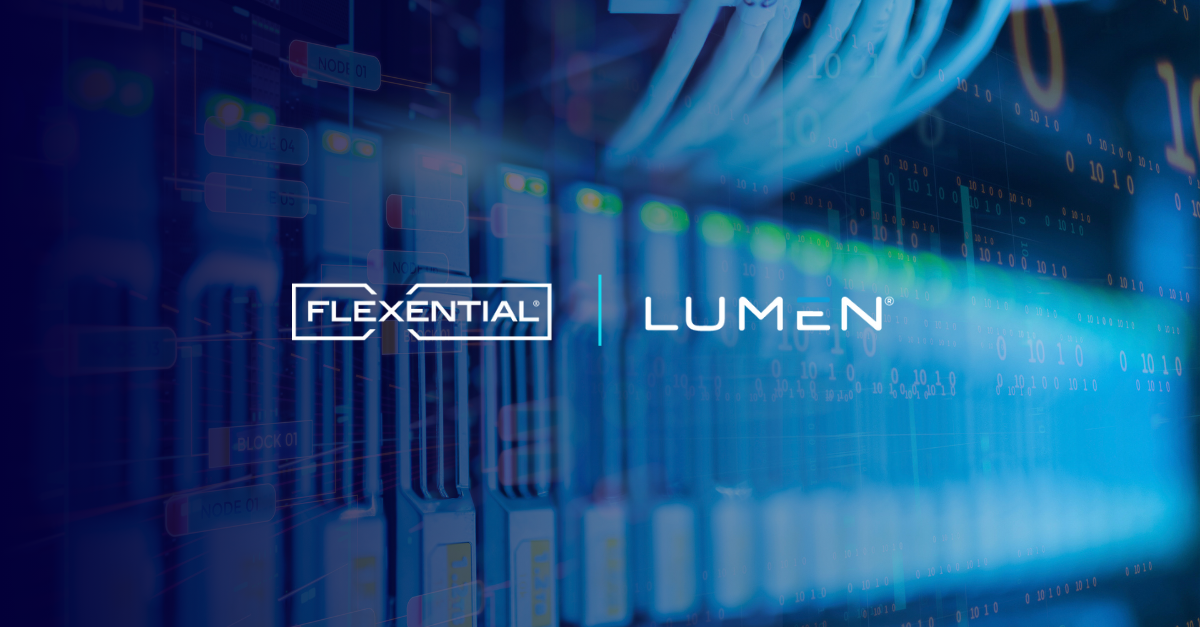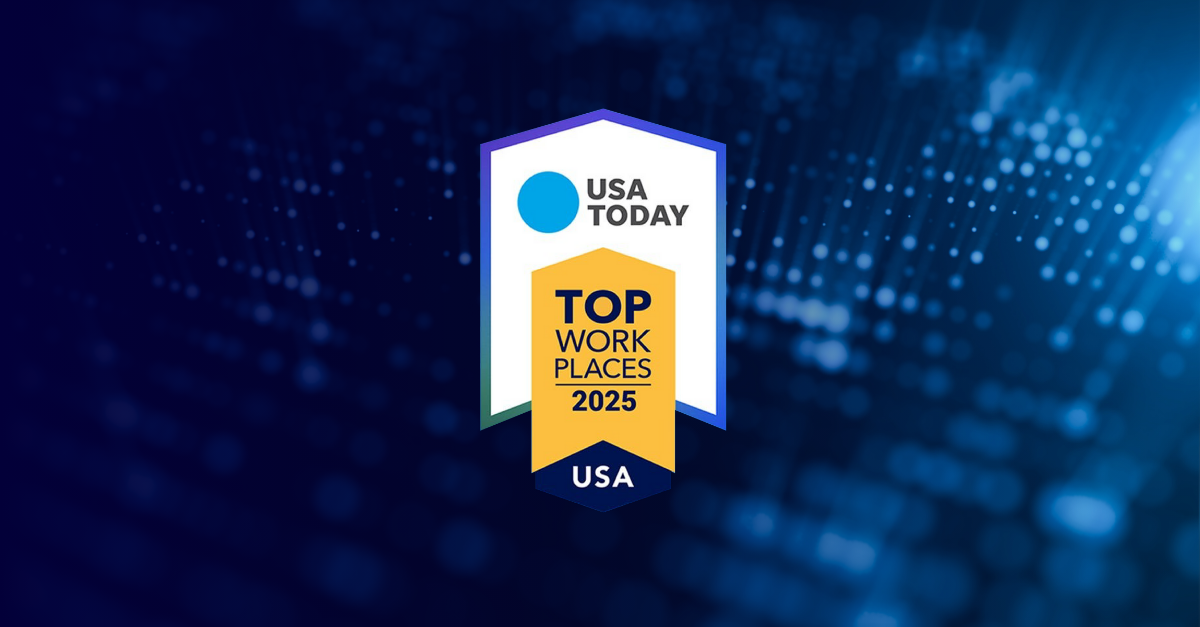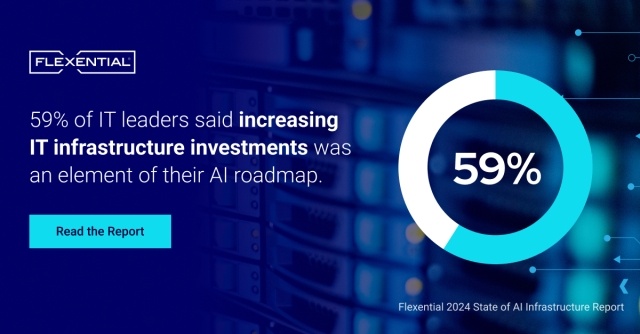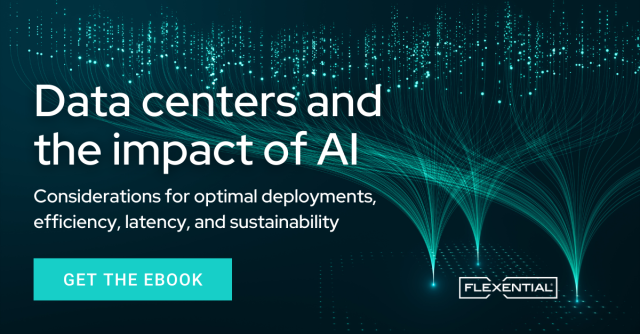The impact of AI and machine learning on data centers
The rapid evolution of data centers is driven by the growing demands of digital infrastructure and the rise of AI. Machine learning (ML), a key subset of AI, is transforming operations by enhancing efficiency, reducing costs, and boosting sustainability.

ML enables real-time data analysis, leading to smarter decision-making, predictive maintenance, optimized energy use, and dynamic resource allocation. These advancements improve reliability, reduce energy waste, and minimize downtime, making data centers more sustainable and cost-effective.
As AI-driven data centers become the norm, the influence of artificial intelligence on data center management is undeniable. According to the Flexential 2024 State of AI Infrastructure Report, 59% of organizations with AI roadmaps are boosting infrastructure investments to meet the growing demands of AI workloads. This sets the stage for a new generation of data centers that are more powerful, sustainable, and cost-effective.
In this blog, we explore how AI and machine learning are transforming data centers, highlighting the benefits and challenges of integrating these technologies.
The role of AI in modern data centers
AI has quickly transitioned from a futuristic concept to a core technology across industries, including data center management. It enables machines to perform tasks that require human-like cognition, such as learning, reasoning, and decision-making. AI is essential in data centers for automating complex processes, boosting operational efficiency, and enhancing digital infrastructure performance while managing vast amounts of data and ensuring seamless operations. As data centers become more integral to business operations, the application of AI is no longer optional but necessary for staying competitive.
Core functions of AI in data centers
AI applications in data centers span a wide range of tasks crucial for maintaining efficient and reliable operations. Key uses include:
Predictive maintenance: AI excels in predictive maintenance by analyzing sensor and system data to forecast equipment failures before they happen. This proactive approach minimizes downtime, extends the lifespan of critical infrastructure, and reduces the costs of unexpected repairs and outages.
Resource optimization: AI dynamically allocates computing power, storage, and network resources based on real-time and anticipated workloads. This ensures peak performance, reduces energy waste, and enhances overall efficiency by identifying underutilized resources and consolidating workloads.
Energy management: AI-driven systems optimize energy use by monitoring and controlling power consumption across various aspects of a data center, from cooling systems to server workloads. This not only lowers operational costs but also supports sustainability by reducing energy consumption and environmental impact.
Beyond these functions, AI enhances areas such as security, network management, and capacity planning. Its integration into data center automation marks a significant advancement, offering unparalleled efficiency, reliability, and scalability.
Key impacts of AI on data center operations
Efficiency improvements
AI greatly improves data center efficiency, especially in energy management, cooling, and resource allocation. It optimizes energy consumption by analyzing real-time data to adjust cooling dynamically, using only the necessary energy to maintain optimal temperatures. This precise control reduces energy use and prolongs hardware lifespan by preventing overheating.
Beyond cooling, AI improves overall resource management. By continuously monitoring workloads and predicting future needs, AI ensures the optimal use of servers, storage, and network resources. This maximizes data center performance while minimizing waste, leading to more sustainable and cost-effective operations.
Cost reduction
AI-driven data centers achieve significant cost savings through predictive maintenance and energy optimization. By analyzing sensor data, AI anticipates equipment failures, reducing downtime and avoiding costly repairs.
Energy optimization further cuts costs by adjusting power usage based on real-time monitoring, scaling back energy use, or consolidating workloads. This intelligent management reduces operational expenses and supports sustainability goals by minimizing the data center's environmental impact.
There is also a financial motivation for moving AI workloads to colocation data centers. Organizations are increasingly shifting away from public cloud services to colocation facilities to optimize resource use and avoid the high costs associated with public cloud environments. Our AI Infrastructure Report shows that 60% of respondents have pulled back AI workloads from the public cloud due to cost considerations and other factors.
Enhanced security
AI-powered systems analyze vast amounts of data in real-time, quickly identifying anomalies that may signal security threats. These systems continuously learn from past incidents, improving their ability to detect and respond to threats effectively.
AI automates security responses, enabling faster reactions to breaches. When a threat is detected, AI can immediately trigger protocols like isolating systems or alerting administrators. This rapid response significantly reduces the risk of data breaches, making AI crucial for maintaining data center security.
In addition to enhancing security, AI plays a critical role in ensuring compliance with industry regulations and standards. By continuously monitoring data and operations, AI can help reduce the risk of non-compliance penalties and enhance overall governance.
Challenges of integrating AI in data centers
Data handling and processing
AI, especially machine learning, relies on vast amounts of data that must be stored, processed, and accessed quickly. This can strain existing infrastructure, leading to bottlenecks that slow down AI operations and hurt performance.
According to the 2024 State of AI Infrastructure Report, 82% of organizations have experienced performance issues with their AI workloads in the past year, primarily due to bandwidth shortages and data processing limitations.
Additionally, AI requires clean, structured, and relevant data, adding complexity to data handling. Data centers must invest in advanced storage solutions, processing technologies, and network infrastructure to manage these demands effectively and ensure optimal performance of AI workloads.
Legacy system compatibility
Integrating AI with existing data center infrastructure poses significant challenges, especially with legacy systems not originally designed for AI. These older systems often struggle to efficiently process AI workloads or communicate with new AI-driven technologies, leading to compatibility issues. Additionally, there are often limits to how much these systems can be upgraded, forcing data centers to carefully balance maintaining operational continuity with implementing AI-driven improvements.
Skill gaps
Implementing and managing AI technologies require expertise in areas such as data science, machine learning, and AI engineering—skills that are not always readily available in traditional IT teams. The skill gaps in these areas can slow down the adoption of AI technologies, as data centers may struggle to find qualified personnel to oversee AI projects and ensure their success.
To address this, data centers may need to invest in training existing staff or hiring new employees with the necessary expertise. Additionally, partnering with external consultants or AI specialists like Flexential can help bridge the gap.
Future implications of AI in data centers
Autonomous data centers
Fully autonomous, AI-managed data centers are quickly becoming a reality. These centers use AI to handle nearly all operations—monitoring, maintenance, energy management, and security—with minimal human intervention. By continuously optimizing processes using real-time data and predictive analytics, they operate more efficiently and precisely.
The benefits include reduced manual oversight, faster issue detection, minimized downtime, and improved reliability. Autonomous data centers are also better equipped to handle complex digital infrastructure, allowing for dynamic scaling based on demand.
Sustainability goals
AI is increasingly crucial in helping data centers meet stringent environmental and sustainability goals. The urgency for AI solutions is highlighted by projections that AI infrastructure could consume up to 134 terawatt-hours of power annually by 2027—equivalent to the entire energy consumption of a country like Sweden, according to the State of AI Infrastructure Report. This statistic underscores the critical need for data centers to implement more sustainable practices as they scale their AI capabilities.
AI can optimize energy consumption by analyzing usage patterns and adjusting cooling systems in real time or optimizing server workloads to minimize waste. These adjustments not only lower operational costs but also help data centers achieve sustainability goals by reducing their environmental impact.
In addition to energy management, AI is driving the development of more sustainable data center designs. Innovations like liquid cooling and renewable energy integration are increasingly guided by AI analytics, determining the most efficient and eco-friendly configurations.
Scalability and innovation
As AI advances, data centers must accommodate increasingly complex workloads, such as those needed for AI training and inference. This demand for scalable AI solutions is driving innovation in data center design, supporting the rapid growth of digital services like machine learning, big data analytics, and cloud computing. AI enables efficient resource management and allocation, allowing data centers to scale operations without sacrificing performance or reliability. Additionally, AI-driven innovations are creating more flexible data center designs that can easily integrate new technologies and adapt to future challenges.
Looking ahead
Integrating AI into data centers is transforming how these facilities operate and evolve. AI enhances efficiency through predictive maintenance and resource optimization, reduces costs via energy management, and advances sustainability and scalability. However, fully integrating AI comes with challenges, including managing large datasets, overcoming legacy system issues, and addressing skill gaps. Despite these hurdles, the benefits of AI in data centers are clear, offering a path to more efficient, sustainable operations.
As AI continues to develop, its influence on the future of data centers will only grow. Staying ahead by understanding and embracing these dynamics is crucial for those looking to harness the power of AI.
Download our guide, "Data Centers and the Impact of AI," to gain deeper insights into the vital role that data centers play in supporting AI workloads and explore how AI-driven innovations can help your organization achieve greater efficiency, sustainability, and scalability in your digital infrastructure.







